How this California designer reframed the way she charges for products
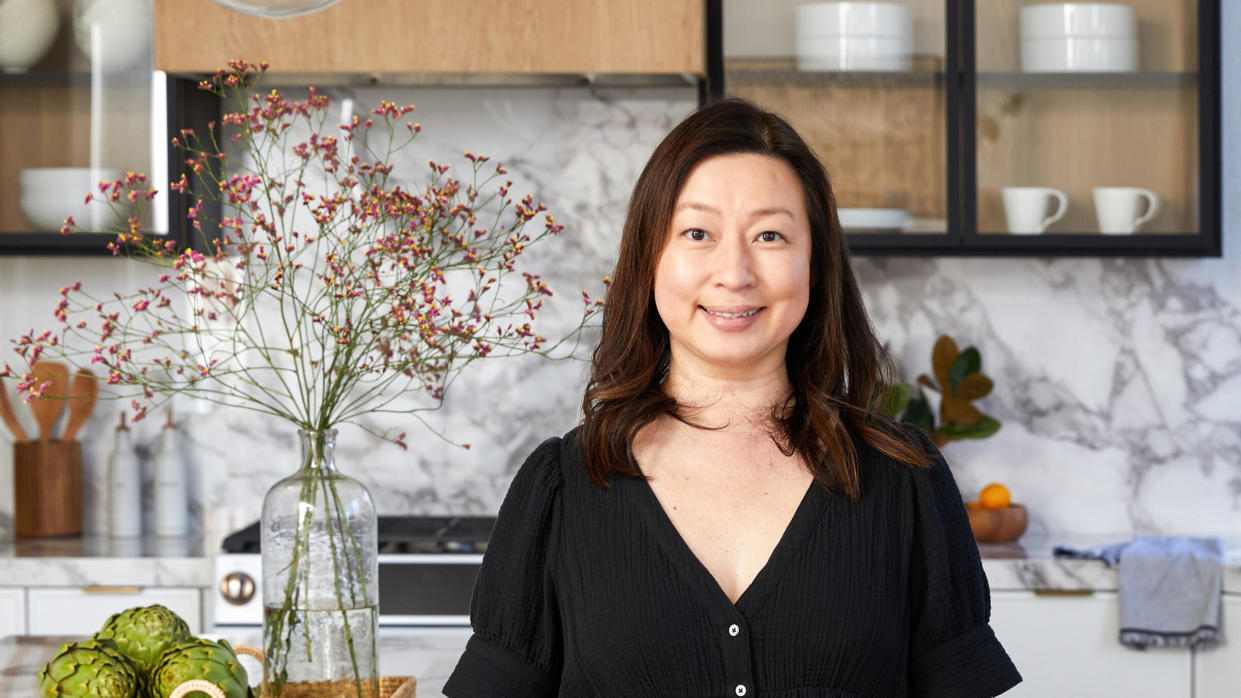
50 States Project | Feb 2, 2024
The 50 States Project is a series of candid conversations with interior designers across the country about how they’ve built their businesses. This week, Danville, California–based designer Nina Jizhar tells us how she pivoted after Homepolish collapsed, why she doesn’t charge a markup, and how she built a great team without bringing on a single full-time employee.
How did you know you were ready to launch your own firm?
Ever since my teenage years, I knew I wanted a career in a creative industry. After high school, I told my dad that I wanted to study graphic design, but he said no. He was like, “Wherever you go, whatever industry you end up in, you need to have good business skills. That’s your foundation—to understand how to run a profitable business. You study business first, and after that, go into the corporate world to learn the ins and outs, and then you can go back to school and study design.” So, I got a degree in business administration, and then I worked for Levi’s and a few other corporate companies for a good seven years.
Were you ready to find a niche that scratched that creative itch?
I worked as a financial analyst, and for the first five years, I really enjoyed the dynamic of the corporate world, the perks, my co-workers. But in the last two years, I was itching for something creative. I was like, “I’m done with this career.” I started taking interior design classes at UC Berkeley’s Extension program. After I had completed a few classes, a commercial architecture firm hired me as a junior designer—I was working on corporate offices, a Safeway store, restaurants and building lobbies.
Three years into that role, I gave birth to my first daughter, so I couldn’t travel [for those jobs] anymore. My husband [encouraged me] to take time off and figure out what I really wanted to do. He said, “Maybe with residential [work], you would have more flexibility and make your own hours.” I took a break from design for three or four years just enjoying my daughter. Then, in 2014, I joined Homepolish.
What appealed to you about the company at that time?
I don’t remember whether they found me or I found them, but I was their first designer in the Bay Area. They started feeding me leads and potential clients, and it just started snowballing from there. I know they’re no longer in business, but I feel like the first two years of their business were really great, when they focused on connecting designers to clients. After that, they grew too fast, lost focus, and tried to manage the designers more than they needed to.
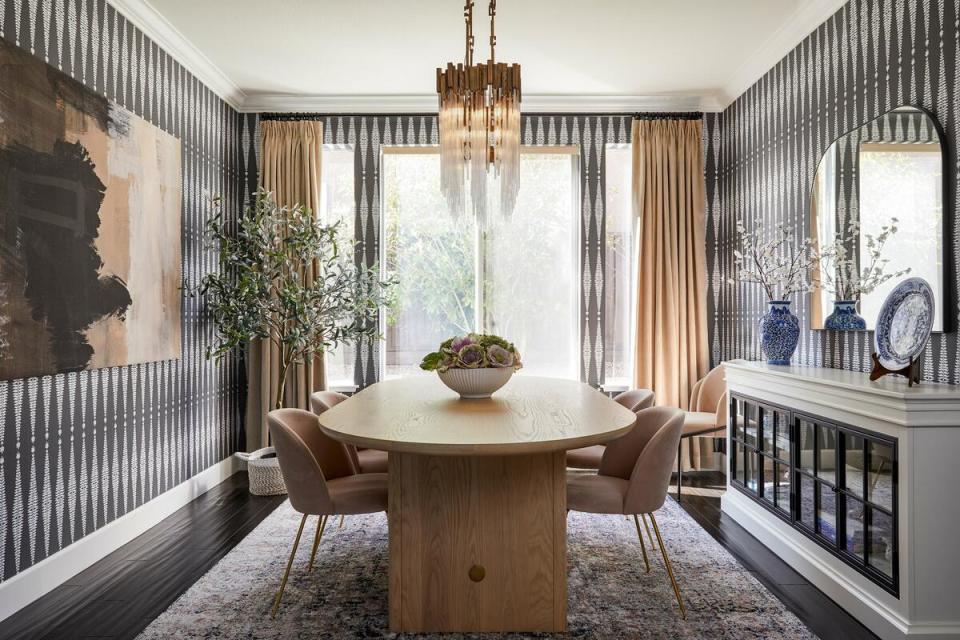
The company’s sudden demise left a lot of its designers in the lurch. Were you still on the platform at the end?
I was still on the platform. I was at a [VIP level], where I got the first pick of projects and they got less of a commission from me. At the same time, they’d take care of all my billing, purchasing and marketing, which was great because by then, I had a second daughter. I only had to focus on design, and they did all the other stuff that I didn’t want to do.
[When Homepolish collapsed] I think they owed me a few thousand dollars. But when I talked to [founder] Noa Santos at the end, I told him, “Best of luck to you.” Because I did get lots of clients from him, and that was very valuable. Those clients helped me build the business I have today, because those clients referred me to their colleagues, and many of them hired us back for their second home or their vacation home.
You suddenly had to take on all of that billing, purchasing and marketing—not to mention pipeline management. How did you adapt to that?
Even though Homepolish had taken over a lot of the business aspect of [my firm] while I was focusing on design, I did learn a lot from them in terms of [what you need from] a contract, sending out proposals and how to follow up with your clients. They offered guidance in those areas, which were valuable lessons for me. When they closed, I already had that foundation, and I just took over purchasing and billing.
That’s still a lot to take on very suddenly!
I knew I didn’t have the bandwidth to do everything on my own and that I had to be able to focus more on the design and the relationships. That’s what is most important to me: to be available to clients and answer their questions, and to maintain relationships with the vendors, contractors and tradespeople. That’s why I maintain all the client and contractor and vendor communications.
To make it work, I turned to contractors. For billing, I have an accountant who comes toward the end of the month to do all my invoicing. I also have two contract designers who are part of the team and who do all my drawings—from the floor plan to construction and permit drawings to renderings. I do most of the design work, but these designers also provide valuable feedback, and then they help me with purchasing. I’ve also looked into hiring an admin-focused person to do the purchasing for us. But right now, we’re doing a lot of renovations, so our purchasing has decreased in terms of furniture. Now we’re specifying all of our materials and fixtures and lighting—and often, the contractor purchases it all, because it’s part of their contract with the client.
Is there a negative financial impact in that arrangement?
What I charge in fees already covers the specifying, so having the contractor purchase all the construction materials makes more sense. That way, if the tile breaks, they’ll handle it. They also know exactly when the materials are coming in, when they’re being installed, and by which subcontractor. They manage the fabricator who’s installing the countertop and backsplash, and they give me punch lists, usually weekly, to go over—maybe they’re doing electrical this week and plumbing next week. It makes everybody’s job easier.
I feel like it’s very important to have a great working relationship with not just the client but with everyone on the job site—the contractors, the subcontractors, the millwork person, everyone. Having mutual respect plays a huge role in a successfully completed project. I have long-term relationships with painters, tile and wallpaper installers, and fabricators. Sometimes when a client just needs a refresh, and they don’t need to hire a GC to make any changes—it’s just a face-lift, not a whole remodel—I can turn to those people and know that I can trust them. They know how we work and how I like things. One time, [a tradesperson] even told my client, “No, Nina will not approve if I do it this way, and then she will make me come back and redo it.” He already knew.
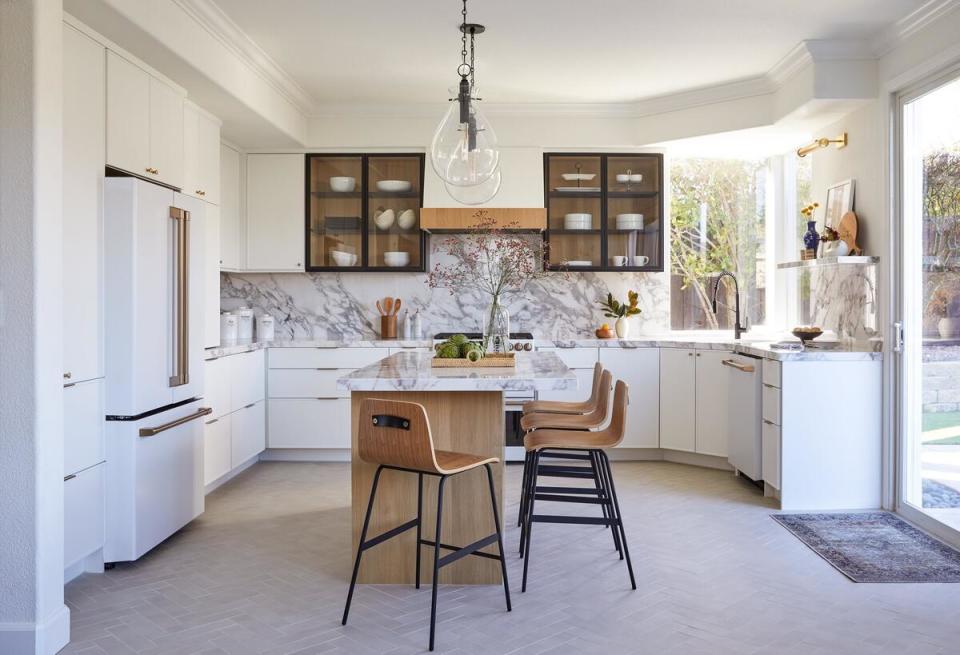
What is a full plate for your business today?
We currently have four to five projects at a time, but they’re all in different phases. I tend to stagger them so that only one or two at a time are in the design development phase, where we’re getting ready for presentations and stuff like that. We cannot handle more than two in that phase.
What makes you say yes to a project today?
It’s so hard for me to say no, especially for repeat clients. Even if it’s a single room, I never say no to them. If any of my former clients have a baby and want us to do just the nursery, I will say yes. But for new, nonreferral clients, we want to do bigger projects—either a remodel, or a new build, or a whole home of furnishings. We no longer do one or two rooms; it has to be a bigger scope of work.
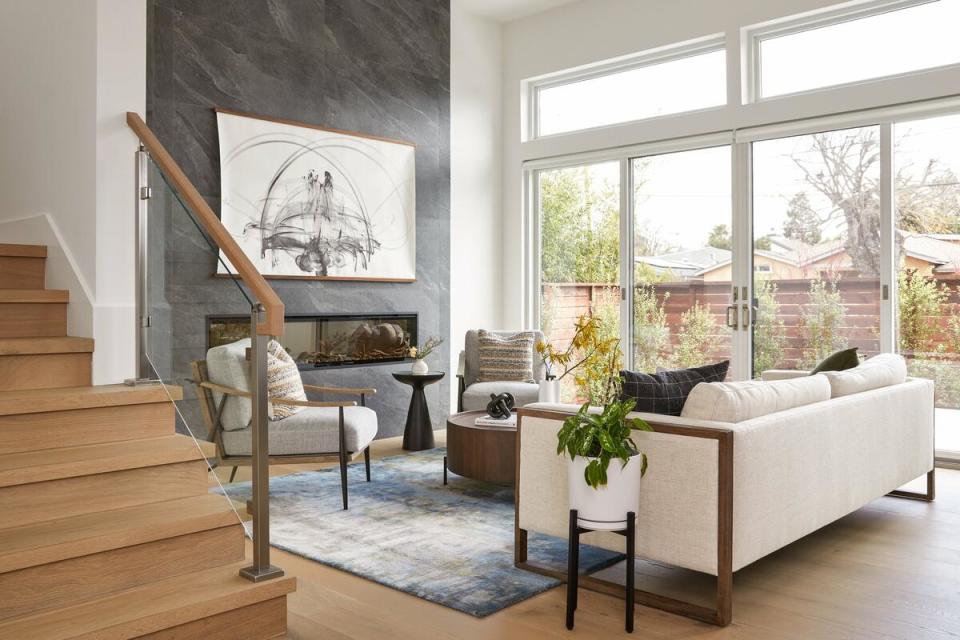
How do you bill for your work?
We charge hourly for consultations. If an existing client wants me to come to their house to assess things for them to implement later, I charge hourly. But if it’s a remodel or a whole-home furnishings job, I charge a flat fee. I know how many hours my team and I will spend on each space—it’s almost like I have a calculator in my head, figuring out [how long it will take from] the beginning of the design to purchasing, how many times you have to visit the job site to track the progress, everything. I know how many hours we need to complete that particular project, and then I turn that into a flat fee.
You mentioned that you don’t feel the urge to order materials. Are you also charging a markup?
No, we actually pass on some of our discounts to our clients. For wholesale companies and trade-only vendors, where the discount can often range from 40 to 50 percent, we split the discount with them 50/50. If it’s the trade discount we get from a big-box store, we pass all of it on to them—I feel like we’ve already charged them to design and purchase stuff like that as part of our fee, and by passing on our discount, they get something back from us.
I have clients who really appreciate this model. But when I was reading your interviews with other designers in this series, I saw that they [talk about it differently]. Some say they mark up 20 percent—and it’s like, well, marking up 20 percent is almost the same as splitting the discount in half.
It’s just a different way of talking about it.
I do get feedback from clients who are very appreciative. They know hiring a designer is not cheap. They have paid all these fees, so they appreciate us passing on some of the product discounts to them.
Have you set your flat fee at a high enough rate to be profitable without income from product sales?
Yes, totally.
So, if someone gets to the end of the design phase and says, “I’m actually not going to purchase anything,” are you OK?
Yes, I am. Because I base my flat fee on a higher hourly rate [that some firms]. I also bill my assistants and my drafter based on my rate, not on their rate. I know a lot of firms have tiers, where the billable rate for the junior designer is less than the principal’s but more than the admin’s and stuff like that. But I bill all of the hours based on my rate. It may be that I charge higher fees than others, but I pass on the trade discounts to [clients], and they like that.
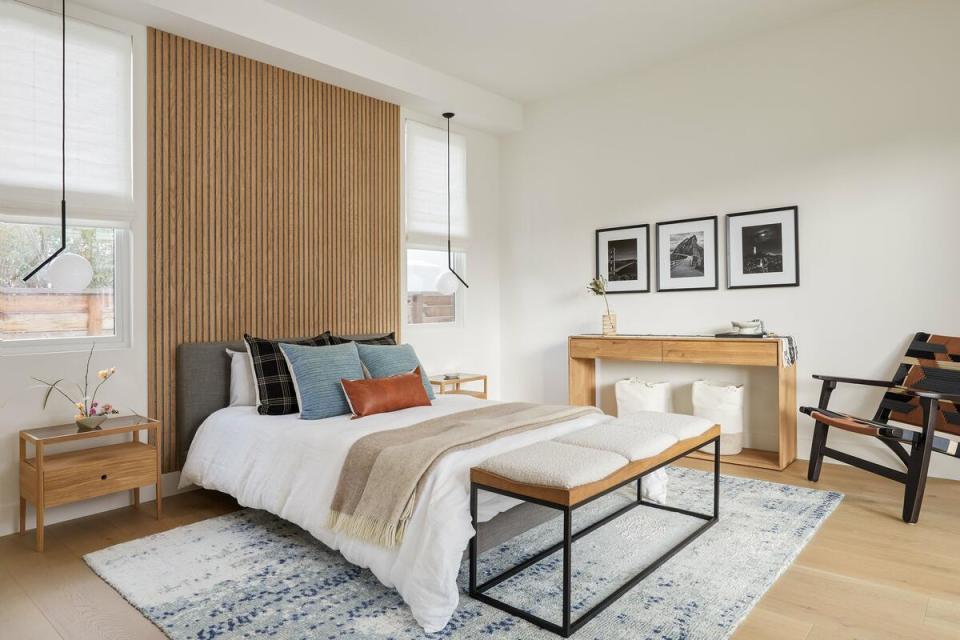
What made you gravitate toward that way of working?
I don’t like to pressure my clients. So much of this business is selling a concept. You’re selling the idea of what their house could look like. But I also feel like it should be a collaborative effort. If clients take 80 percent of what we’re suggesting, I’m OK with it—the other 20 percent can be their own things, maybe an heirloom piece that they want to bring in. I also feel like with my business model, I am not stressed if I’m not selling products. They can even take my design and decide that they want to implement it on their own time, or find something similar at their own pace—hey, I’m still getting paid.
The model also really puts the value on what’s in your brain.
It’s true. And also, clients these days get really, really smart. Maybe because of Instagram, or magazines and blogs—they read a lot, they know a lot, and they can find a lot of things. I guess it varies. I have one client who trusts us completely; she said, “I want to move into a furnished home, and this is what we like,” and we went from there. But we also have clients who want us to design, but then they want to source it. They know where to find stuff, and they have the time to do it. Sometimes I learn from them!
Is that different than when you started out?
Actually, yes. When I first started out, clients didn't know anything—they didn’t know what to look for or where to look for it. They didn’t even know what West Elm was. Now they know a lot. Sometimes I’m like, “Why are you hiring me if you know so much?” But what they need is guidance. Sometimes I’ve also found that the husband and wife do not have the same style or aesthetic, so they need a mediator—somebody who can come in and say, “Let’s blend both of your styles together so that you can enjoy each other and enjoy these spaces.”
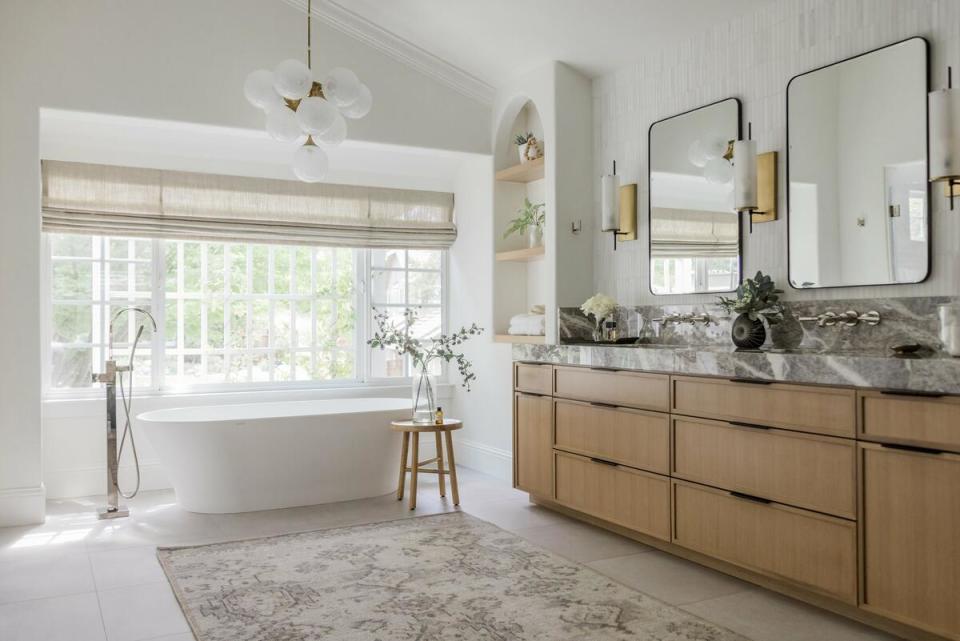
What’s unique about the design scene in the Bay Area?
We have a lot of tech people here who have a lot of money. You have to have a lot of money to live in the Bay Area because of the price increase in housing—[in some neighborhoods] it has doubled, or even maybe more than that, in the past 10 years. That also means our clients have a lot of equity in their homes. Especially with the interest rates being so high, a lot of these homeowners don’t want to move. Let’s say they purchased their house a decade ago for $1 million. Now the house is worth $2.5 million, but buying another home that is within their square footage, especially if you’ve remodeled, is going to cost them $5 million. It’s almost like people are not moving these days; they just keep remodeling. We’re turning garages into a living space—into a game room for their kids, that kind of stuff.
When you look back on starting your firm, what is the biggest thing you know now that you wish you had known then?
Time management is one. The other thing, which I’m working on getting better at right now, is [setting boundaries]. I have clients who text me nonstop, even on nights and weekends, and I’m finally getting better at letting them know, “Hey, let’s email.” That means my team can read it and it can be addressed in a timelier manner. And it’s documented—then when they have a question about something, we know exactly how we responded because we can go back and check on our notes.
When did you start to make that shift?
Very recently. I mean, I still have clients who text. But I’ve started telling them, “If it’s not urgent, please email, and we will respond within 24 hours.” That’s how fast we respond—sometimes we respond within a few hours! But with text messages, it’s so time-consuming. I also want to have more balance. Early on, I was just full-on working—dedicating 100 percent of my time to my clients. Now, I can start taking a step back. And most clients are OK with it. I was a little bit afraid of telling them that—especially the clients that have been with me for years and years—but they’re all like, “Oh, totally, of course. You have a family too.” Yes, I do—I have two daughters who are like, “Why are you working all the time?”
Is the goal to take a step back—to not be as available?
Yes. At the start of the year, I told my girls, “OK, this year, I’m going to start only taking projects that are close to my heart. I am going to start making sure our personalities and our design approaches match so that I can have more balance in work and life.” My older daughter is 14, and she needs me more than ever for these teenage years, and my younger daughter is 7. I feel like this is the time when they really need guidance, and I don’t want to miss out on that or have regrets in the future that I wasn’t there for them.
What does success look like for you?
When a client sends me an email a year or two after we completed the project, and they say, “Hey, it’s been a year or two. How are you doing? We still love our house.” To me, that’s success—that they want to check in with me. That’s a huge treat.
To learn more about Nina Jizhar, visit her website or find her on Instagram.
Want to stay informed? Sign up for our newsletter, which recaps the week’s stories, and get in-depth industry news and analysis each quarter by subscribing to our print magazine. Join BOH Insider for discounts, workshops and access to special events such as the Future of Home conference.

